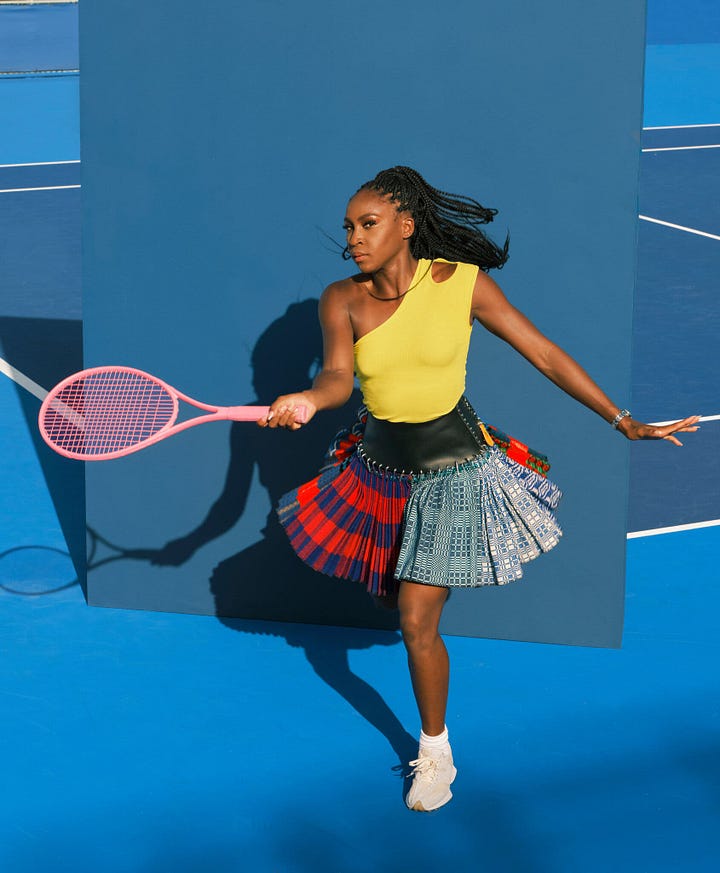Let Women’s Football Lead. Not Catch Up.
The women’s game doesn’t need sympathy. It needs its own system and the courage to build it differently.
With the Euros landing this summer, the spotlight on the women’s game is only getting brighter. I’ve never claimed to be a die-hard follower. Outside of the occasional Barcelona match or a Champions League semi or final, I rarely tune in. But when the Lionesses are playing, I always support the nation. That’s never in question.
My focus has always been on football as a system. I look at business models, growth potential, and the structure behind the spectacle. And when I look at how the women’s game is evolving, the opportunity is not about catching up to the men’s game. It is about building something better.
This is not a puff piece.
It is a rethink.
“We don’t need more mimicry. We need more imagination.”
Every time women’s football makes a move forward, whether it’s a record-breaking crowd, a big broadcast deal, or a marquee sponsor, the same line gets rolled out.
“Imagine how big it’ll be when it catches up to the men’s game.”
It sounds supportive, but it is a ceiling. It positions the men’s game as the default model, even when that model is clearly under pressure.
The men’s game is globally dominant, but it is also bloated, politically tangled, and often disconnected from fans. Trying to recreate that structure is not ambition. It is inherited thinking that slows everything down.
What the women’s game needs now is not imitation. It is innovation.
Women’s football is not behind. It’s just early. And that is the advantage.
The biggest misconception in sport right now is that the women’s game is behind.
It’s not. It’s just early. And being early is powerful. You are not locked into legacy broadcast deals. You are not stuck with formats that no longer serve the modern game. You can actually build around the audience instead of outdated tradition.
Just look at tennis. In 2022, the US Open women’s final pulled 3.4 million U.S. viewers. The men’s final pulled 2.9 million. That is not a one-off. That is a trend.
Coco Gauff. Naomi Osaka. Women’s tennis broke through by building its own rhythm, style, and appeal. Football should take note.




“World Sevens is not a gimmick. It is elite competition, reimagined for a new generation.”
One of the most exciting things on the horizon is World Sevens Football, launching this May in Portugal.
It is a global seven-a-side women’s competition that moves faster, connects deeper, and is built for the way people actually consume sport today. Not by trying to be flashy, but by tightening the product.
It features some of the best players in the world, competing at a high level in a format made for streaming, storytelling, and global attention.
It is being led by Adrian Jacob, who spent over a decade shaping Chelsea Women into one of the top sides in Europe. Now he is applying that expertise to something entirely new.
“We are not trying to replicate the 11-a-side game. We are creating a product that puts the best parts of football in a format built for modern fans. It’s about letting the talent shine and making the game more accessible worldwide.”
— Adrian Jacob, Head of Football, World Sevens
Being early is not a weakness. In football, it is leverage.
The NWSL (National Women’s Soccer League) is showing what happens when you build without baggage.
In 2024, viewership across its broadcast partners hit 18.7 million. That is not growth. That is lift-off. The Championship game pulled nearly one million viewers on CBS, up 18 percent from the year before. That is prime-time territory.
And the stadiums? Packed. For the first time ever, the league broke two million fans across a regular season. Average attendance hit over 11,000 a game. Those are not padded comps or nice-to-haves. That is demand.
The whole thing is now backed by a 240 million dollar media rights deal spread across CBS, ESPN, Amazon, and Scripps. Not one platform. Not one night a week. Four major partners. This is infrastructure, not a campaign.
What is different is how the NWSL sees itself. These clubs are creators. The players build brand equity, not just highlight reels. Culture leads. Not committee rooms.
When you are not stuck following someone else’s map, you are free to draw your own.
“Blame the soccer mums in minivans if you want, but they built a pipeline.”
You cannot talk about the elite level without talking about the grassroots.
In too many schools across Europe, football still is not a consistent option for girls. No PE time. No local team. No weekly match to look forward to. That has to change.
The United States got this right early. Football became a school sport. An expectation, not a luxury. That foundation created not just a strong national team, but a fanbase and a market.
Blame the soccer mums in minivans if you want, but they helped build the base. They showed up. They got it done.
Europe does not need to copy the U.S., but it does need to start younger and be more intentional. Otherwise we will keep talking about potential without ever seeing the results.
A New Playbook Is Already Being Written
So what does the future of women’s football look like?
Not a watered-down version of the men’s game. Not a spin-off. Not a side project.
A standalone product. Global. Scalable. Competitive. Commercially viable.
School systems that treat football for girls as standard, not a side option
Seven-a-side formats like World Sevens, built for digital and global audiences
Shorter seasons with better pacing and purpose
Clubs that act like creators, not just sporting institutions
Players who are athletes, storytellers, and business owners
Mixed-gender showcase moments that feel authentic, not forced
Investment that is tailored, intentional, and built on belief
It’s already happening. And it’s happening in style.
Just look at Mercury 13. They didn’t just invest in Como Women FC. They’re designing a new blueprint for the game. From serious ambitions to enter the UK league system to Champagne-fuelled watch parties inside members clubs like 180 House in London. Football, fashion, and a dress code. This is not about catching up. This is about shifting the energy.
Different fans. Different formats. Different frequency.
That’s how you lead.

“The women’s game does not need to catch up. It needs to take the lead.”
We need to stop asking when the women’s game will match the men’s.
That question limits the ambition before it even starts.
The better question is: what if it builds something different, and in many ways, something smarter?
Not more of the same. Something more intentional.
Not legacy. Vision.
Not just growth. Better governance, better access, better connection to community.
This is not about replicating the product. It is about rethinking the model.
Because the opportunity is wide open.
And the game is already moving.
I don’t just write about the future of football, I help shape it. If this hit a nerve, I’m probably already thinking about how we could build something together.
Thanks for reading GAMEPLAYER.
Through CAOS, GAFFER, and over 100 football contracts, transfers, brand deals, and equity-driven partnerships, I’ve seen power shift from clubs to investors, brands to athletes, and legacy to culture.
I break down what matters. Private equity takeovers, athlete-led media, billion-dollar sports IP, and the future of merchandising and streaming.
This isn’t just commentary. It’s about who’s making the real moves and what’s coming next.








Completely agree. Build a new mouse trap. Excellent piece. Thank you.
Hell yes!
Especially the home grown talent and building a pipeline of players. That is what we’re in need of in the UK.
Also, the differentiation from the men’s club is vital. Not just in marketing but how the club treats each team internally. How the club sees the women’s team is how we, the public, will perceive it. Eg. Arsenal women training at the same facility as the men.